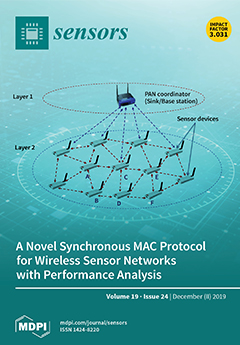Underwater Wireless Sensors Networks (UWSNs) use acoustic waves as a communication medium because of the high attenuation to radio and optical waves underwater. However, acoustic signals lack propagation speed as compared to radio or optical waves. In addition, the UWSNs also pose various
[...] Read more.
Underwater Wireless Sensors Networks (UWSNs) use acoustic waves as a communication medium because of the high attenuation to radio and optical waves underwater. However, acoustic signals lack propagation speed as compared to radio or optical waves. In addition, the UWSNs also pose various intrinsic challenges, i.e., frequent node mobility with water currents, high error rate, low bandwidth, long delays, and energy scarcity. Various UWSN routing protocols have been proposed to overcome the above-mentioned challenges. Vector-based routing protocols confine the communication within a virtual pipeline for the sake of directionality and define a fixed pipeline radius between the source node and the centerline station. Energy-Scaled and Expanded Vector-Based Forwarding (ESEVBF) protocol limits the number of duplicate packets by expanding the holding time according to the propagation delay, and thus reduces the energy consumption via the remaining energy of Potential Forwarding Nodes (PFNs) at the first hop. The holding time mechanism of ESEVBF is restricted only to the first-hop PFNs of the source node. The protocol fails when there is a void or energy hole at the second hop, affecting the reliability of the system. Our proposed protocol, Extended Energy-Scaled and Expanded Vector-Based Forwarding Protocol (EESEVBF), exploits the holding time mechanism to suppress duplicate packets. Moreover, the proposed protocol tackles the hidden terminal problem due to which a reasonable reduction in duplicate packets initiated by the reproducing nodes occurs. The holding time is calculated based on the following four parameters: (i) the distance from the boundary of the transmission area relative to the PFNs’ inverse energy at the 1st and 2nd hop, (ii) distance from the virtual pipeline, (iii) distance from the source to the PFN at the second hop, and (iv) distance from the first-hop PFN to its destination. Therefore, the proposed protocol stretches the holding time difference based on two hops, resulting in lower energy consumption, decreased end-to-end delay, and increased packet delivery ratio. The simulation results demonstrate that compared to ESEVBF, our proposed protocol EESEVBF experiences
lesser delay, approximately
more energy efficiency, and a further
reduction in generating redundant packets.
Full article






